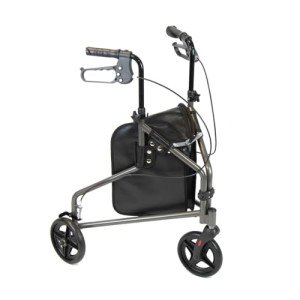Rollators are a vital mobility aid that boosts the freedom and self-reliance of those with restricted walking capabilities. They are developed not only to offer stability and assistance but likewise to motivate mobility and engagement in everyday activities for people of any ages. This post dives deep into the world of rollators, providing insights into their functions, benefits, types, upkeep, and key factors to consider when choosing the most suitable model.

A rollator is a mobile walking aid equipped with four wheels, handgrips, a seat, and often includes extra functions such as storage baskets and brakes. Unlike traditional walkers, which require the user to lift them off the ground, rollators can be pressed along as the user walks, making them especially helpful for people with limited strength or balance.
Rollators consist of several functions that boost their usability:
Using a rollator offers many benefits, particularly for seniors and individuals with mobility obstacles. These might consist of:
When thinking about which rollator to pick, it's essential to acknowledge the different types available. The main categories include:

| Type of Rollator | Description | Best For |
|---|---|---|
| Requirement Rollator | 4 wheels, seat, numerous options. | General use, indoor and outdoor. |
| Sturdy Rollator | Reinforced for higher weight capability. | Bigger individuals needing extra assistance. |
| Three-Wheel Rollator | Compact and lightweight, simple to maneuver. | Minimal space and indoor use. |
| Foldable Rollator | Collapsible for easy transport. | Regular travelers or caregivers. |
Selecting the ideal rollator includes considering numerous aspects to satisfy the person's specific needs:
To prolong the lifespan and functionality of a rollator, routine maintenance is important. Here are some beneficial pointers:
Yes, lots of rollators are created with bigger wheels or specialized treads to deal with uneven surface areas. However, users need to exercise caution and guarantee they feel steady when browsing such terrains.
When standing straight, the deals with of the rollator needs to line up with the user's wrist when their arms are relaxed at their sides. This position guarantees comfy use.
No, rollators can be purchased without a prescription. Nevertheless, speaking with a health care professional can be useful to determine the best choice based on individual requirements.
Coverage for rollators can differ based on the type of insurance plan. Numerous Medicare plans provide coverage for some types of walkers, consisting of rollators. It's recommended to consult the insurance coverage supplier directly.
Rollators for walking substantially boost the lives of numerous individuals dealing with mobility challenges. Providing stability, self-reliance, and ease of movement, they serve as important tools for preserving an active lifestyle. Comprehending the various types, functions, and how to keep them in excellent condition can empower users in making notified decisions. As mobility requirements differ significantly from individual to individual, it is necessary to pick a rollator for walking that best fulfills individual requirements and boosts quality of life.
No Data Found!
